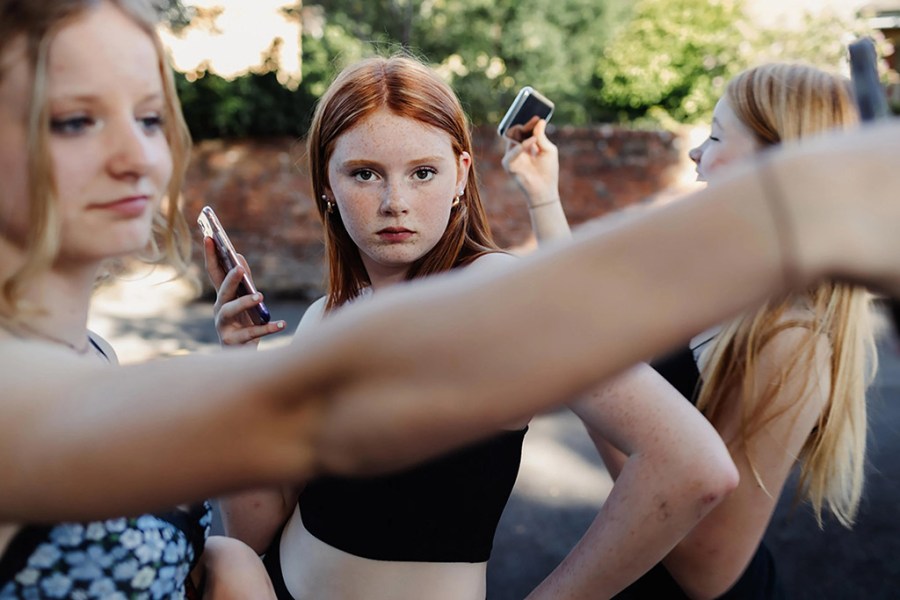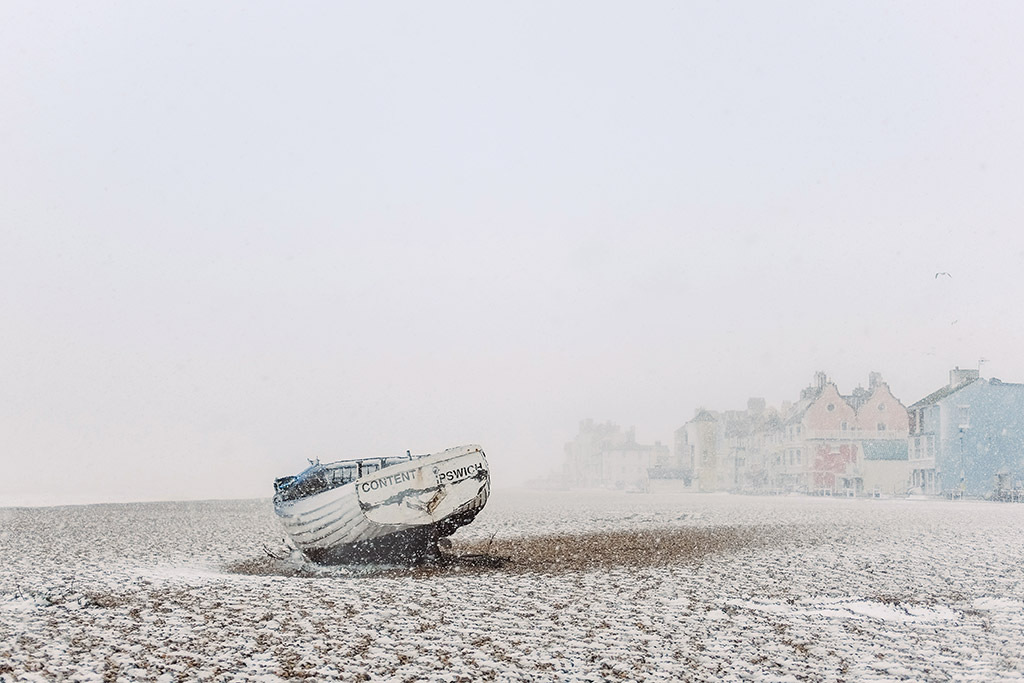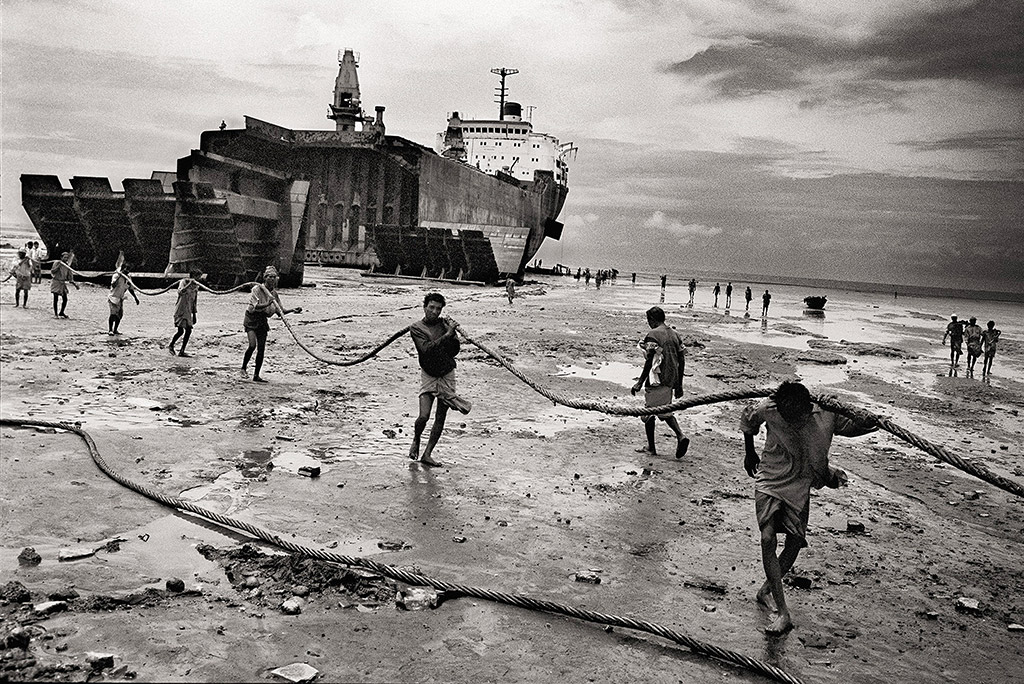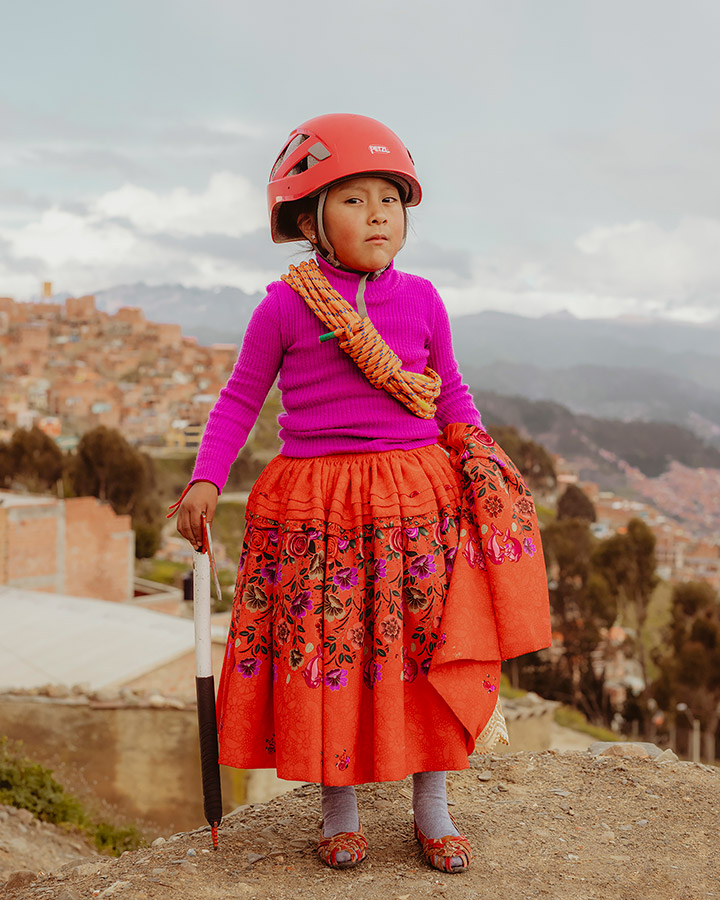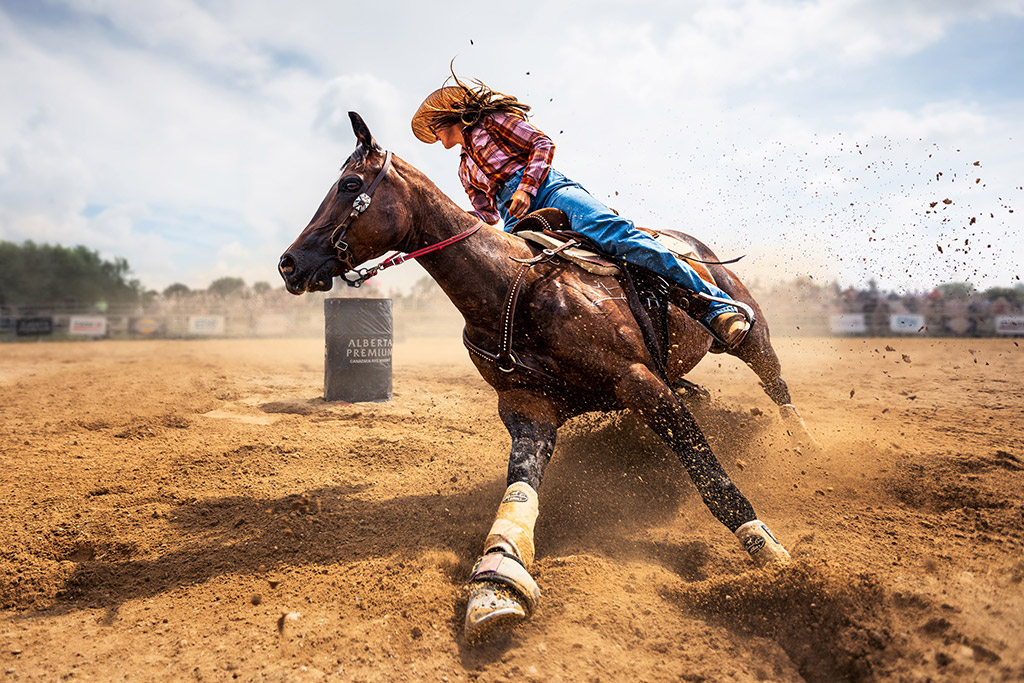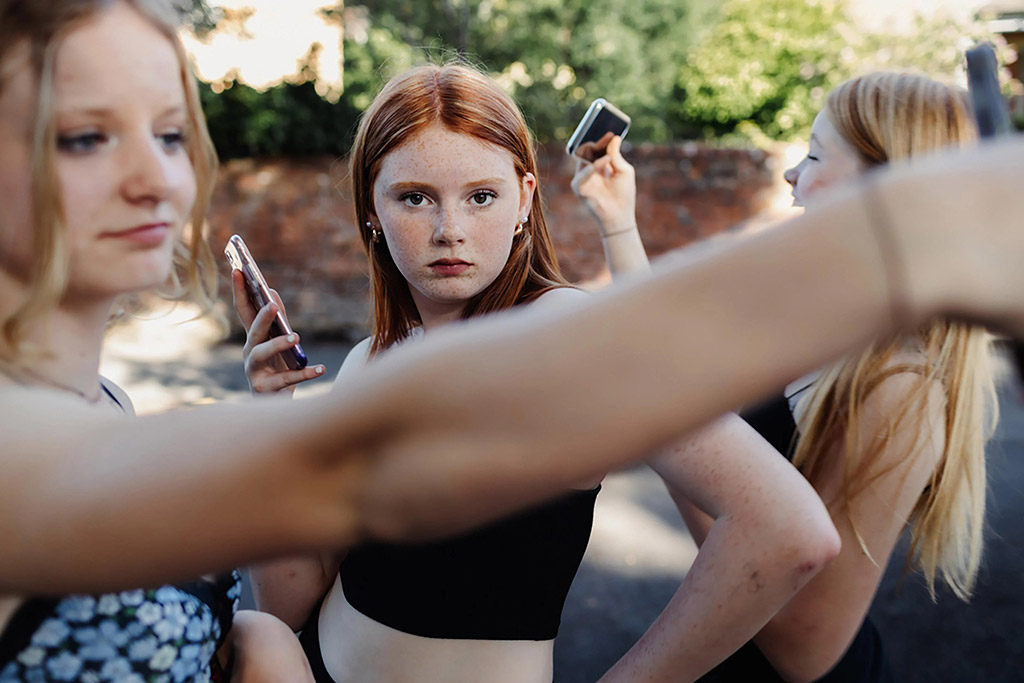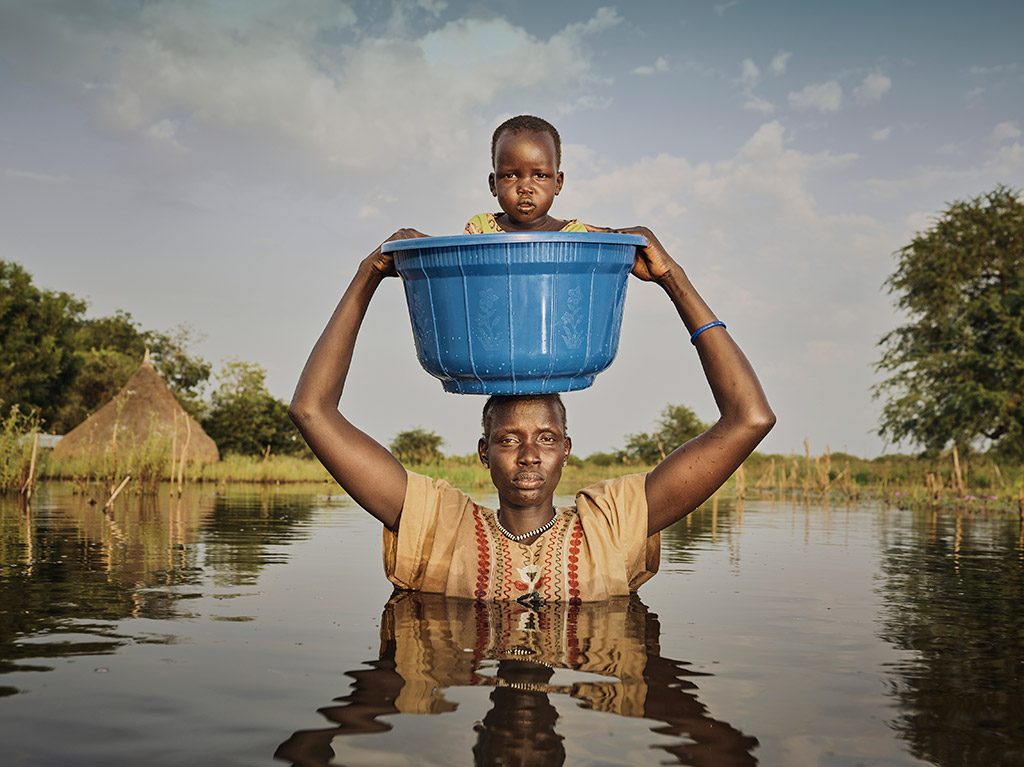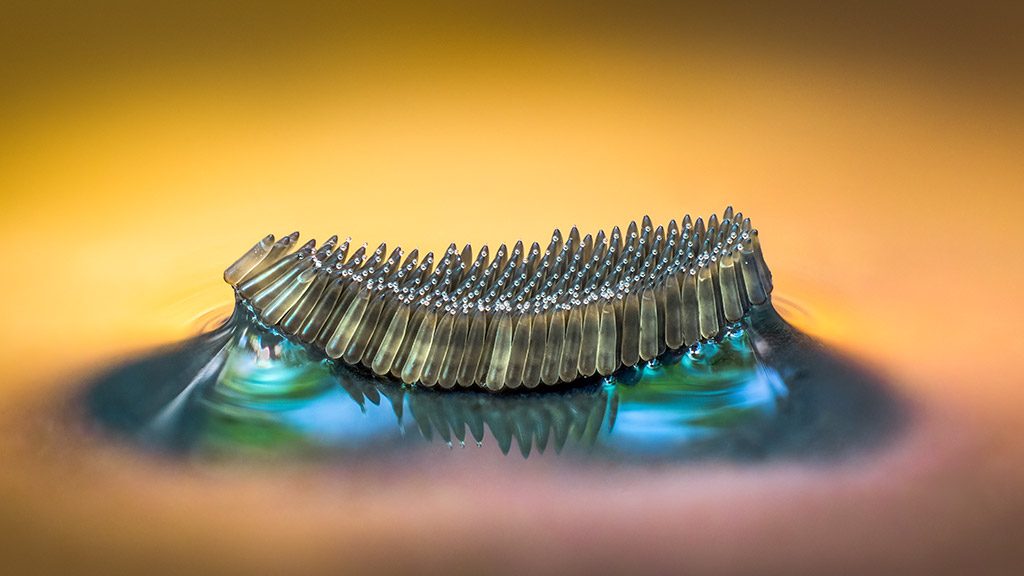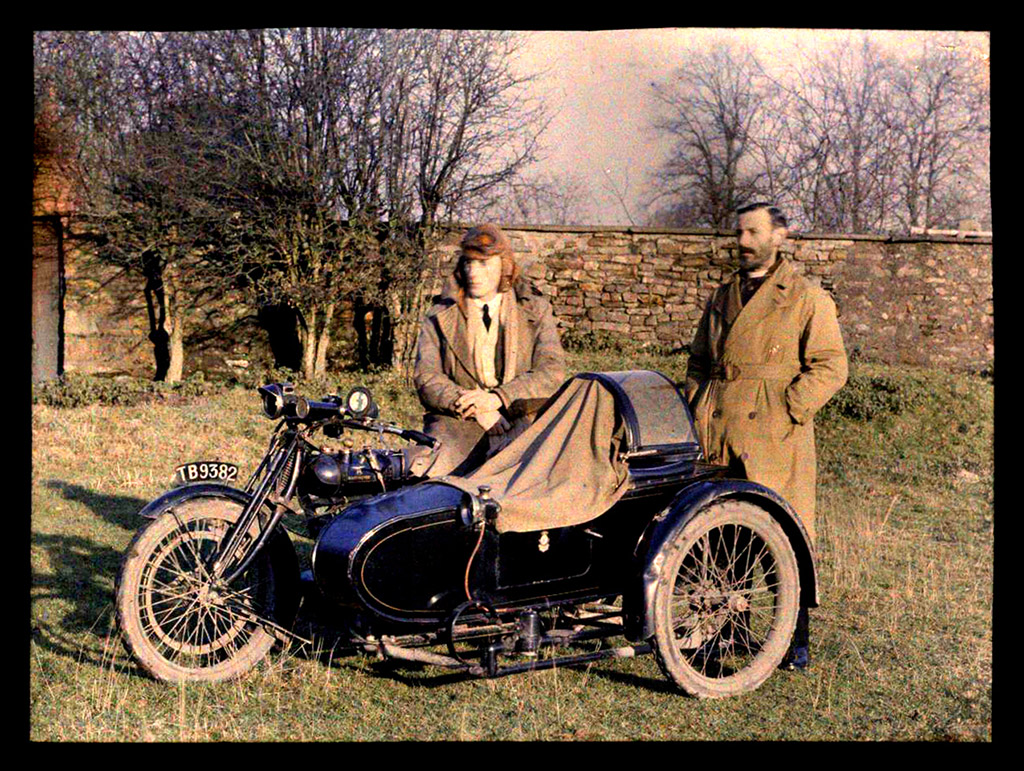At AP we are very fortunate to view thousands of stunning images each year. It’s hard to pick just one but here are some of our favourites and what made them stand out from the rest. AP contributors and Picture Editors also share some of the best photographs they have seen throughout 2023
The AP Team’s best photographs of 2023
Amy Davies, Features Editor
Flooded Cave by Martin Broen
Sony A7R III, 8-15mm, 1/20sec at f/4.5, ISO 6400
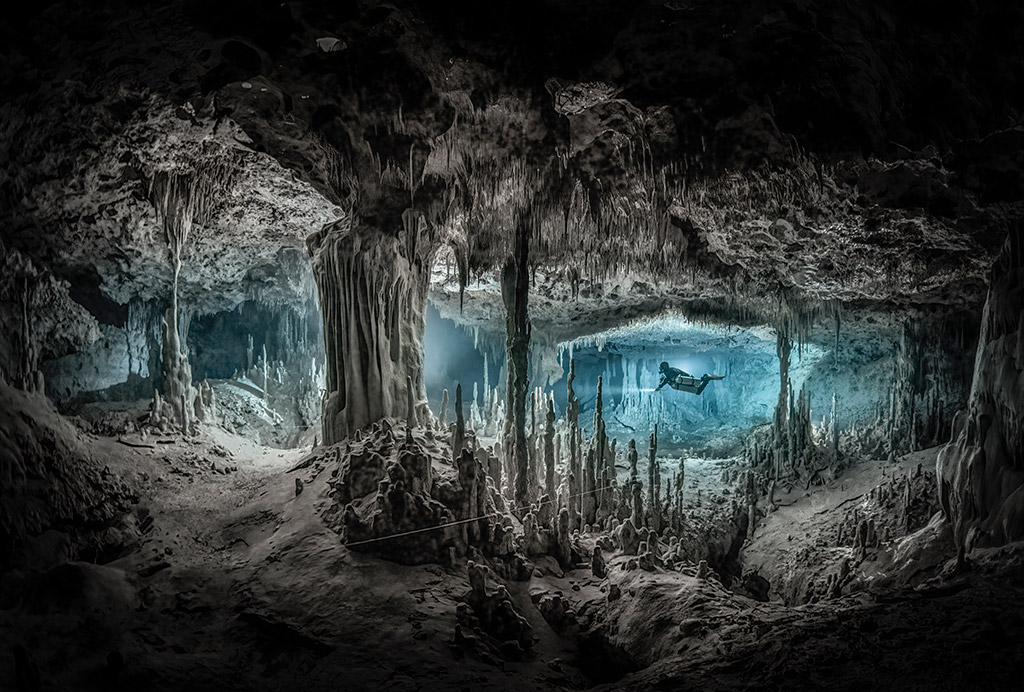
Flooded Cave photographed by Martin Broen, United States Yucatan Peninsula, Mexico 2022 International Landscape Photographer of the Year Award. © Martin Broen / The 9th International Landscape Photographer of the Year
As the Features Editor of the magazine, I see so many amazing photos – whether from books, exhibitions, projects, competitions or elsewhere – that it can be somewhat overwhelming when you’re tasked with picking just one.
Not only are there so many great images – remembering them all when it comes to putting this together is another big challenge. So, I’ll caveat my choice here with the statement that it’s very possible that another image is actually my favourite and will come to my mind long after I’ve written this down!
That said, it really is an incredible image. I wrote about it in our 23 May issue, having spoken to the photographer Martin Broen about how it was achieved. I usually try to pick an image here that I know there’s absolutely no chance I would be able to take myself – I’m pretty sure very few people could recreate such a shot in this instance.
Taken in one of the biggest flooded cave systems in the world, at the Yucatán Peninsula in Mexico, it’s easy to see why the image stood out to win the International Landscape Photographer of the Year prize – this year’s competition is just about to close as I write this. Next year’s winner has a lot to live up to, but I look forward to seeing if anybody manages to get close! See more at Internationallandscapephotographer.com/martinbroen.com
Hollie Latham Hucker, Technique Editor
Winter Content by Daniel Ruffles
Fujifilm X-Pro 1, 35mm, 1/2200sec at f/2, ISO 200
Every year I spend weeks deliberating on what to pick for this feature in our Christmas special. The standard of images we see is truly outstanding but, in my opinion, the best pictures are the most memorable and this was one of my personal favourites that stuck in my mind.
Taken by landscape photographer Daniel Ruffles, this snowy seaside scene caught my attention immediately when I was tasked with selecting images for the Landscape Photographer of the Year 2023 competition winners feature. Of course, it helps that I know Aldeburgh in Suffolk, the location where it was taken, so I already had a personal connection with what I was viewing. That aside, it’s the unique weather conditions that made it stand out. As Daniel says in his LPOTY caption, it is unusual to get snow on the East Anglia coast. Suffolk is a well-photographed county and seeing something a bit different can make all the difference when entering a competition. Clearly the judges at LPOTY thought so too as it won the Coast category in this year’s competition.
As it’s Christmas and this scene is rather festive-looking, I thought that it would be the perfect opportunity to showcase it again. The muted tones of the colourful seaside houses as they disappear into the distance with the falling snow, give the scene a beautiful, painterly quality. The placement of the boat and space in the upper two-thirds of the frame balance out this composition perfectly.
You can see Daniel’s photo and more at the Landscape Photographer of the Year exhibition which is touring the UK until 4 May 2024. See lpoty.co.uk/exhibition for details. Instagram: @danielianphotography
Andy Westlake, Technical Editor
Sunbathing Cat by Tommaso Carrara
Leica Q2, 28mm, 1/250sec at f/11, ISO 320
This fabulous photo came second in the ‘Street’ round of our Amateur Photographer of the Year competition this year. I’m guessing this decision may have upset a reader or two: one of the unspoken rules of street photography is that it should concern people going about their daily lives. But rules are there to be broken, and if you can’t photograph cats when wandering the streets with your camera, then I have to ask, what exactly is the point in life?
Regardless of whether this should be called a ‘street’ shot or not, it’s a lovely photograph. Tommaso has expertly balanced light and shade while producing a geometrically perfect composition. But more importantly, he’s captured the very essence of felinity, with the cat languidly sunbathing in a small patch of light. I doubt there’s any cat owner (or lover) who doesn’t immediately recognise this behaviour. If you’re searching for some kind of truth about the reality of life on the streets, then for cats, this is it.
Nigel Atherton, Editor
Ship-breaking yard, Chittagong, Bangladesh by Ian Berry
Water is the single most important resource on the planet and it’s a travesty that, in a world with so much wealth, so many people die every year due to having either not enough of it or too much. Magnum Photos legend Ian Berry has spent 15 years documenting the world’s relationship with water, from drought-ravaged parts of Africa to flood-prone regions such as Bangladesh. Some of the things he has photographed are just appalling but this particular image resonates with me because I spent most of my twenties at sea.
This is a ship breaker’s yard in Bangladesh, where knackered old vessels are dismantled by men and boys literally with their bare hands. Nobody in the West will touch these ships because they are full of asbestos and other hazardous materials, but these workers are sent in barefoot, with no protective clothing, to spend their days doing back-breaking work among the twisted metal of these rusting hulks. The industrial accident rate must be colossal, and if they manage to avoid injury, they have asbestosis to look forward to.
Berry is an old-school photojournalist, shooting in black & white, and with an innate sense of composition and timing. His book Water, from which this image is taken, is one of our books of the year.
Jessica Miller, Deputy Online Editor
Whales Making Waves by Bertie Gregory
DJI Mavic 2 Pro + Hasselblad L1D-20c + 28mm f2.8 lens, 1/120sec at f/4, ISO 10
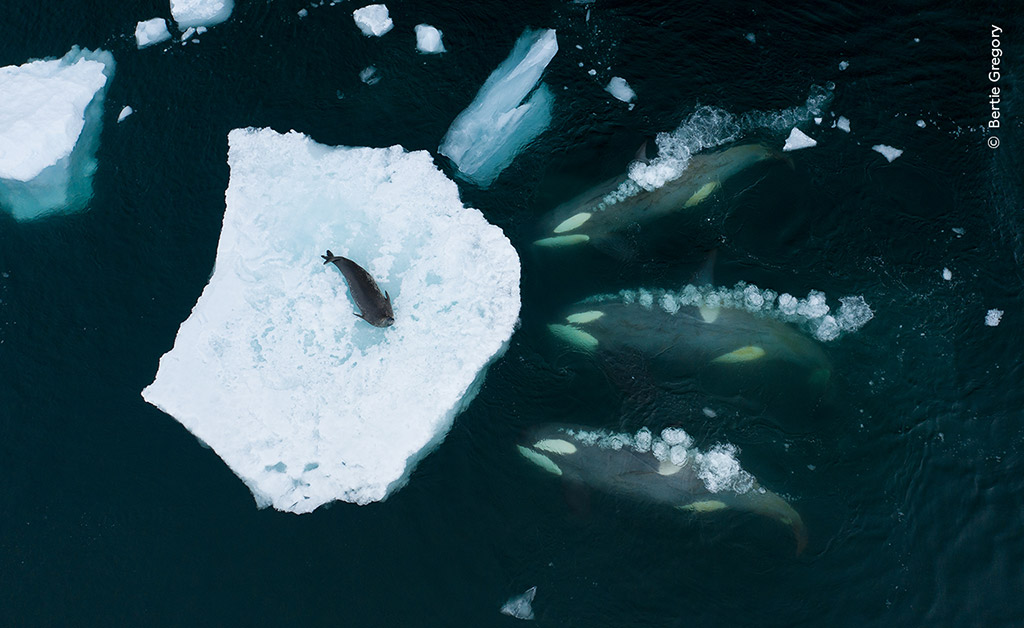
Whales making waves by Bertie Gregory, UK. Winner, Behaviour: Mammals. DJI Mavic 2 Pro + Hasselblad L1D-20c + 28mm f2.8 lens; 1/120 at f4; ISO 10. © Bertie Gregory/Wildlife Photographer of the Year
I saw this image when I visited the press view of the Wildlife Photographer of the Year exhibition at the Natural History Museum. Bertie Gregory has been entering the competition since he was 15 and this year is the first time he has won an award; first place in the Behaviour: Mammals category.
He was fortunate enough to embark on a two-month-long expedition searching for orcas. This group specialise in hunting seals by wave washing; charging towards the ice and creating a wave that washes the seal into the water. When I spoke to Bertie, he told me this was one of a very few still images he took on this occasion, as he was there to film. This in itself is impressive.
The composition and framing of the photo is so well executed, and presents each whale perfectly lined up to make their wave. There is so much detail in this image – from the seal to the individual bubbles from the whales. As soon as I saw it within the exhibition, it reminded me of scenes from wildlife documentaries I have watched, and this is one of the spectacles that has always impressed me.
You can see Bertie’s photograph and more of the winning images, at the Wildlife Photographer of the Year exhibition until 30 June 2024. See nhm.ac.uk/wpy/competition for details. Instagram: @bertiegregory
Geoff Harris, Deputy Editor
5-year-old Yamily, Bolivia, by Celia D Luna
Canon EOS R5, Canon 50mm f/1.4, 1/500 sec at f/5, ISO 320
While my colleagues might have picked some quite dramatic and spectacular images for this selection, I adore this relatively understated portrait by Celia D Luna.
This beguiling and adorable image was shown at this year’s superb PhotoFrome festival and it’s stayed in my mind for several reasons. As a keen travel photographer, I know how hard it is to get locals to be ‘themselves,’ particularly very young kids. In this image, Yamily looks very self-composed, and you can sense her strong personality – nothing is more natural to her than walking around with a helmet and climbing gear. She’s a child, but there is something wise and ageless about her expression, too.
The composition is spot on, really capturing Yamily’s rugged Bolivian home without distracting from her, and the colours absolutely sing out. A wonderful travel portrait.
Musa Bwanali, Online Writer
Slam on the Brakes by Zhenhuan Zhou
Canon EOS 5D Mark IV, EF16-35mm f/2.8L II USM, 1/3200sec at f/2.8, ISO 125
‘Slam on the Brakes’ by Zhenhuan Zhou won the Motion category in the Open competition of the 2023 Sony World Photography Awards. Not only is the image very striking in the vivid colours but Zhenhuan captured the action of the horse and its rider in a way that leaves you intrigued. It’s an image you just can’t forget!
When I first saw this image on exhibition at Somerset House, London, it made me stop and appreciate the photographer’s skill and eye – from composition to precision. To freeze a moment like that is just amazing.
The photographer describes the moment as, ‘Barrel racing is a competition where cowgirls ride quickly around barrels; the one that does this in the shortest time wins. Every time a horse reaches a barrel it needs to brake sharply, turn around the barrel and then race to the next one. The whole race is exciting, especially at the turns.’
Isabella Ruffatti, Online Writer
TikTok by Philippa James
Canon EOS R, 35mm EF f/1.4 lens, 1/200sec at f/2.5, ISO 200
This photo, titled ‘TikTok’, is one of three of James’s photos to be part of the Taylor Wessing Portrait Prize exhibition at the National Portrait Gallery. From her series ‘No Big Deal’, which addresses the sexism and sexual harassment faced by young girls, this photo encapsulates the prominent role social media has in girlhood today and the degree to which we experience life on our phones.
What caught my eye about James’s photo was how the composition was used to highlight the interconnectedness between the trio of girls (and their phones), while one girl stands in the middle (and in focus, with everything else around her being blurred) gazing straight at the camera.
This photo not only works as part of a series of moments between the girls but easily works by itself as well, hinting at a larger narrative and leaving you wondering what the girls are saying at their phones and just what has made the girl in the middle turn away from her phone.
The photograph’s overall look, with its vibrant colours and stark highlights and shadows, reminds me of scenes from movies by the directors Sofia Coppola and Greta Gerwig, which are known for documenting the unique joys and struggles of girlhood.
You can see Philippa’s photo and more at the Taylor Wessing Portrait Prize exhibition until 25 February 2024. See www.npg.org.uk and Instagram: @philippajames
Best photographs of 2023 contributors’ choices
Those who contribute to AP see countless images throughout the year, so it takes a great deal for one to stand out. Here, four of our regulars choose the image that made an impact on them in 2023
Angela Nicholson
Former technical editor at AP, Angela is now a regular contributor, writing technique features and camera tests. She founded the Facebook group SheClicks, which numbers around 12,500 members.
Gone Fishing, by Lesley Martin
Canon EOS R5 with Canon RF 100-500mm F4.5-7.1L IS USM
Kingfishers are a popular subject, but one of the most difficult birds to photograph because they’re so small and fast. Most people barely see a flash of blue, let alone capture a sharp image. That’s why Lesley Martin’s image sticks in my mind: it’s one of the best portraits of a kingfisher that I’ve ever seen. Lesley submitted it for the SheClicks July 2023 Challenge, which had the theme ‘Complementary Colours’, with a brief to have colours that pop together. The bright orange and blue of the kingfisher really nails it.
Lesley shot her image from a small hide on the outskirts of Durham, where a small beck runs alongside an embankment covered in ivy. The embankment was in shade for most of the day but as the sun moved round, attractive hot spots appeared through the gaps in the trees. There were several places the kingfisher could have perched on, but luckily, he landed on one in a patch of light.
I like that Lesley has captured the bird resting on a perch rather than diving into water, because it gives us the opportunity to really study its beautiful plumage, which is set off against the dark green background.
Peter Dench
Regular readers will know Peter for his sparky and occasionally irreverent tone. He’s also a photographer, curator and presenter, and his work has been published in several books.
Nyalong Wal, 36, carries her daughter, Nyamal Tuoch, 2, to dry land, by Peter Caton for Action Against Hunger
From 8-19 February 2023, gallery@oxo in the Oxo Tower, London, hosted an exhibition of Peter Caton’s images from South Sudan. Almost 4,500 visitors made the pilgrimage to see Unyielding Floods; Restoring Hope. I was one of them. His choice of using what could be considered an impractical combination of digital Hasselblad H5D-50c and Elinchrom flash heads had borne dividends. The large-scale image of Nyalong and Nyamal pinged with critical detail, bringing them face to face with an international audience. It’s an image that illustrates how communities are adapting to the changing climate, demonstrating resilience and hope in the face of destruction and despair.
Tracy Calder
Tracy has interviewed some of the best-known names in the world of photography. She regularly runs workshops, has a newsletter for creatives, and launched and runs the Close-up Photographer of the Year Awards.
Mosquito Egg Raft by Barry Webb
There’s nothing quite like the joy of being shown something you never knew existed, especially when it’s presented as exquisitely as this. Photographer and gardener Barry Webb is usually celebrated for his slime mould images, but here he shows us a raft of mosquito eggs photographed as though they are the Crown Jewels. The picture has been shortlisted in the Insects category of this year’s Close-up Photographer of the Year competition and is the result of a keen eye and a brilliantly executed focus stack of 47 images (combined using Zerene Stacker). Barry’s camera of choice for this shot was an Olympus OM-1 with 60mm lens (fitted with extension tubes). The result is a celebration of nature and an invitation to question some of our more negative views of mosquitoes!
The results of Close-up Photographer of the Year will be published in January. For more information about it, visit www.cupoty.com.
John Wade
Writer, editor and contributor to more than 30 books, John Wade’s knowledge of classic cameras and processes is virtually unrivalled. He regularly writes on the subject for AP.
Autochrome, 1920s, unknown photographer
Though I first saw – and bought – this photo during 2023, it was actually taken in the 1920s. It’s a lovely image, but it’s the process behind it that fascinates me. Because this is a very early form of colour photography known as an Autochrome, first available commercially in 1907.
Autochromes were produced by coating glass plates with minute grains of potato starch dyed red, green and blue-violet, filling in the gaps between them with black charcoal, then layering a monochromatic photographic emulsion over the top. When developed and viewed by holding against the light, the monochrome image, seen through the coloured grains, appeared in full colour.
This one is quarter-plate size (3¼x4¼ inches) and the colours are still vibrant. I also like that one man has a slightly blurred head, meaning he must have wobbled a bit during the long exposure required, probably around one second in bright sunlight.
Best photographs of 2023 picture editors’ choices
Each year, the picture editors of every newspaper and media outlet sift through tens of thousands of images – some more memorable than others. They share a round-up of the most powerful photographs some of these visual editors have seen in 2023
Mikko Takkunen, Photo Editor, International, The New York Times
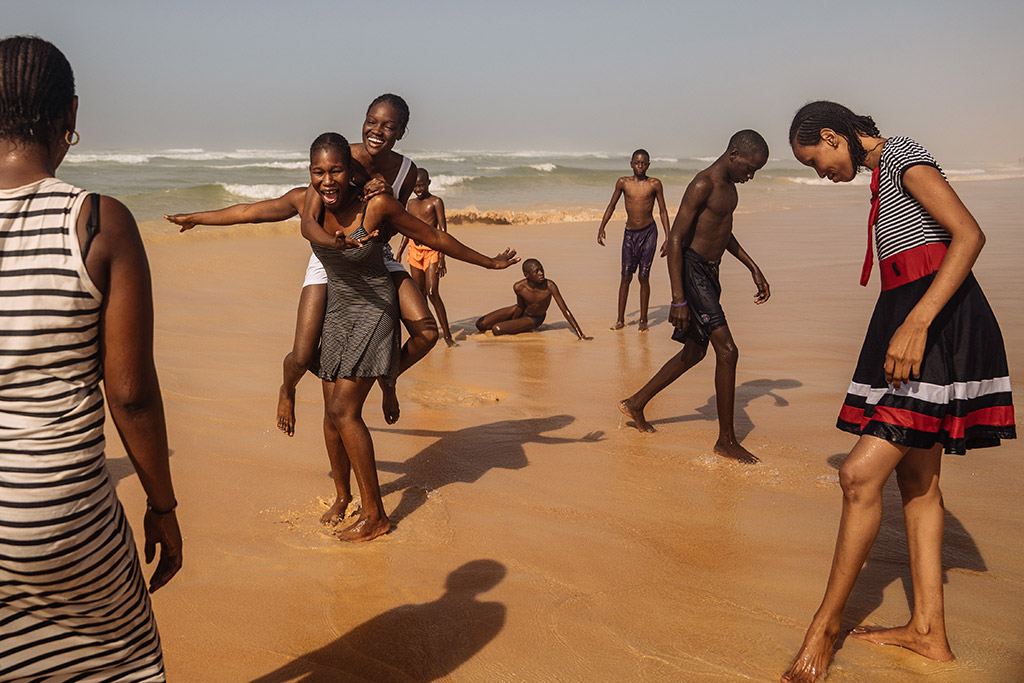
University students are seen hanging out in the afternoon in Yoff Beach, Dakar, Senegal. With a median age of 19, Africa is the continent with the world’s youngest population. As the demographic shift presents an opportunity for growth in the region, young people continue to navigate complex challenges – while taking an active role in shaping their future. © Hannah Reyes Morales/The New York Times
The New York Times’s International desk is doing an ambitious project about Africa’s youth boom, which is based on the statistic that Africa has the fastest-growing, youngest population of any continent. By 2050, one in four people on the planet will be African, causing this seismic change, which is already starting to register. The opening piece was written by the chief Africa correspondent for the Times, Declan Walsh, and we assigned Paris-based Filipina photographer Hannah Reyes Morales to take the photographs. She made four trips to five countries in different parts of the continent.
This photograph, showing university students playing on the Yoff Beach in Dakar, Senegal, in March of 2023, ran at the top of the story online and on the cover of the 40-page special print section. I think the image does a great job at capturing the youthful energy which is at the centre of the story. It has beautiful light and colour palette, and the way the students are composed is strikingly layered. It also feels very dynamic and active, especially the youths’ expressions and body postures. It’s a photograph people around the world can relate to. There’s something very universal in it.
Jim Powell, Picture Editor, The Observer
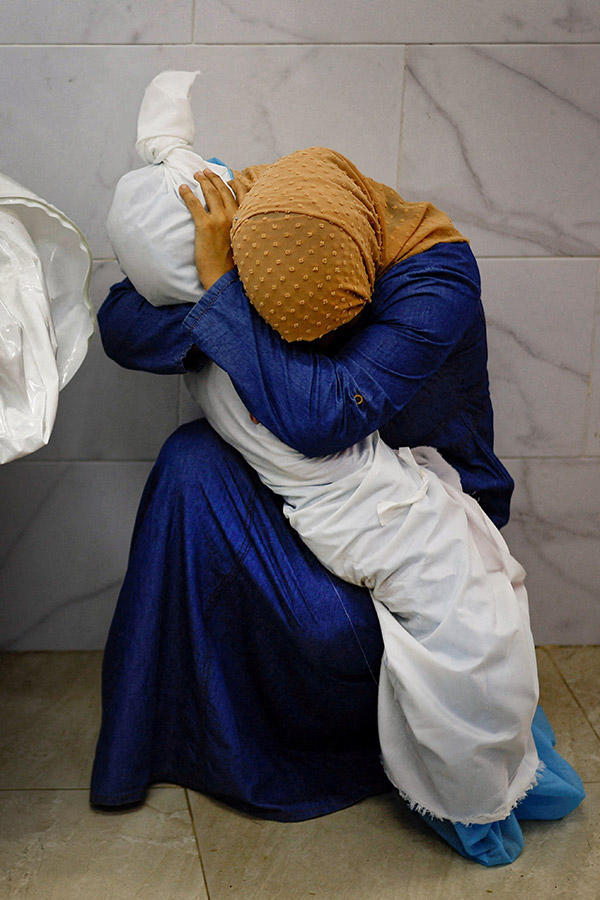
Palestinian woman Inas Abu Maamar, 36, embraces the body of her five-year-old niece Saly, who was killed in an Israeli strike, at Nasser hospital in Khan Younis in the southern Gaza Strip, 17 October 2023. © REUTERS/Mohammed Salem
We received many outstanding but horrifying images from courageous photojournalists in 2023 – especially from Gaza by photographers such as Mohammed Abed, Fatima Shbair and Ali Jadallah – photographers who themselves have lost relatives and friends during the war in Gaza with Israel. They continue to work in very difficult and dangerous conditions to show the brutal realities of this war. In this photograph, taken by Reuters photographer Mohammed Salem, a woman embraces a child in her arms at Nasser hospital in Khan Younis in the southern Gaza Strip.
The child is dead and wrapped in cloth. It is a scene that I have seen many times in recent weeks. The fact that the viewer is unable to see either the woman or child’s face gives the image a resonance; it becomes a universal symbol of war and especially of this war in which so many babies and young children have been killed. The woman is Inas Abu Maamar and she is tightly cradling her five-year-old niece, Saly, after she was killed by an Israeli airstrike. ‘I lost my conscience when I saw the girl, I took her in my arms,’ Inas said. ‘The doctor asked me to let go… but I told them to leave her with me.’
Jay Davies, Director of Photography, News EMEA (Europe, Middle East and Africa) at Getty Images
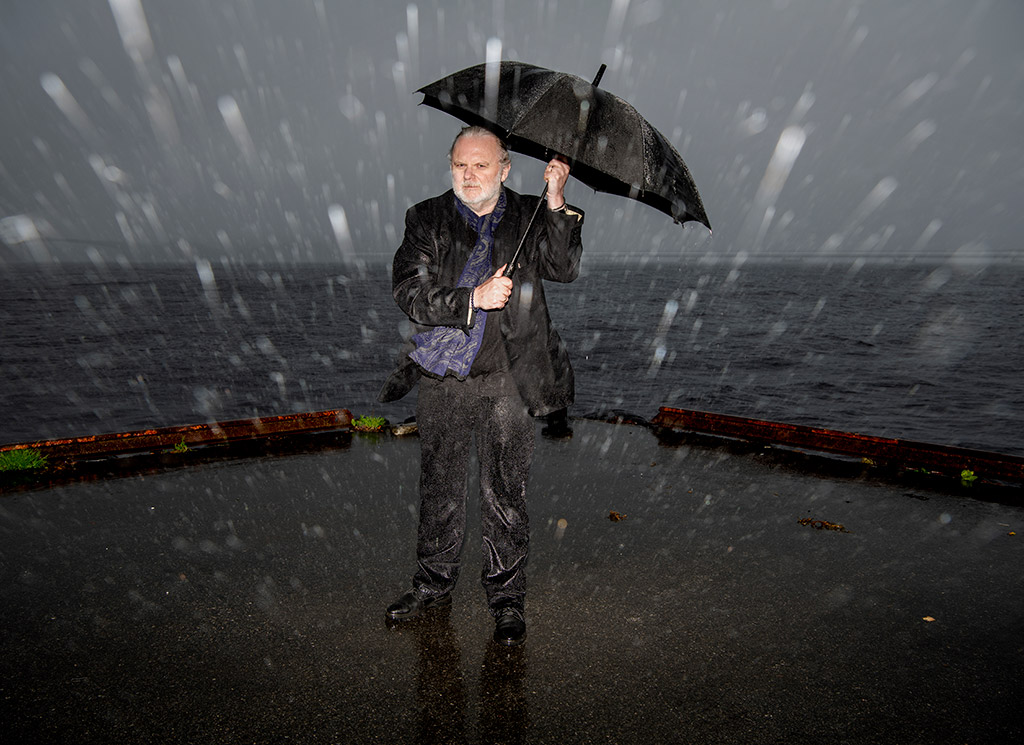
Jon Fosse poses in the rain after being awarded the Nobel Literature Prize on 6 October 2023 in Frekhaug, Norway. © Helge Skodvin/Getty Images
In a year like this one, it can feel like few of the events we cover are happy ones. One exception arrives each October, with a week-long scramble to photograph the year’s Nobel Prize laureates. When the names are revealed in Stockholm, media begin a mad dash to interview the surprised recipients. Often, they are academics whose universities will organise press conferences. On other occasions, winners are more off-the-grid. This year’s winner for literature was the Norwegian author, Jon Fosse, whose whereabouts were hard to confirm when his name was announced on 5 October. We eventually learned from a Norwegian broadcaster that he was in a cottage northwest of Bergen. The game was afoot!
We called the photographer Helge Skodvin, in Bergen. Could he photograph Fosse? And, by the way, did he know where he lives? Frekhaug, came the response. Helge had photographed him before. He arranged to meet Fosse at Frekhaug quay. A potential wild goose chase was starting to seem like a turkey shoot. But by the time Fosse arrived to meet Helge, the skies over the quay had opened. Lightning and torrential rain. Helge was soaked. Fosse was soaked. Helge managed a handful of pictures. ‘Damn,’ Fosse said. ‘I forgot to close the window of the car.’ The photo shoot was over.
This picture represents that perfect combination of experience and serendipity that makes news photography so satisfying. It also represents the deluge of media attention that lands upon Nobel laureates each October. Sometimes, being part of a media feeding frenzy can give a journalist pause. Not so with the Nobel announcements, which are happy occasions with subjects who are usually happy with the attention. We hope that Jon Fosse still felt that way when he got back to his car.
Sean Conway, Senior Picture Desk Editor at Getty Images
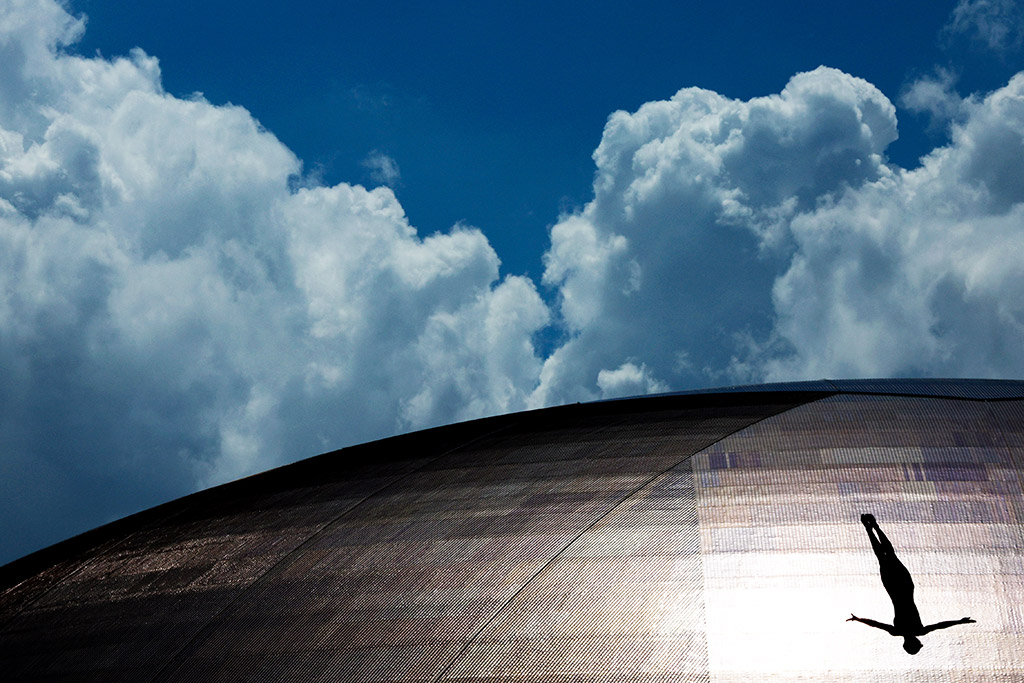
An athlete takes a practice dive prior to the Women’s High Diving preliminaries on day one of the Fukuoka 2023 World Aquatics Championships at Seaside Momochi Beach Park on 25 July 2023. © Adam Pretty/Getty Images
One of my favourite images from 2023 is this image from our sports photographer Adam Pretty, captured during the high dive at the Fukuoka 2023 World Aquatics Championships. Why do I think it makes a great picture? Adam has caught the diver at just the right time so they are silhouetted against the sunlit part of the dome structure with the blue sky and clouds adding a dramatic effect, which makes this a compelling image.
Karin Andreasson, Picture Editor at Guardian News & Media
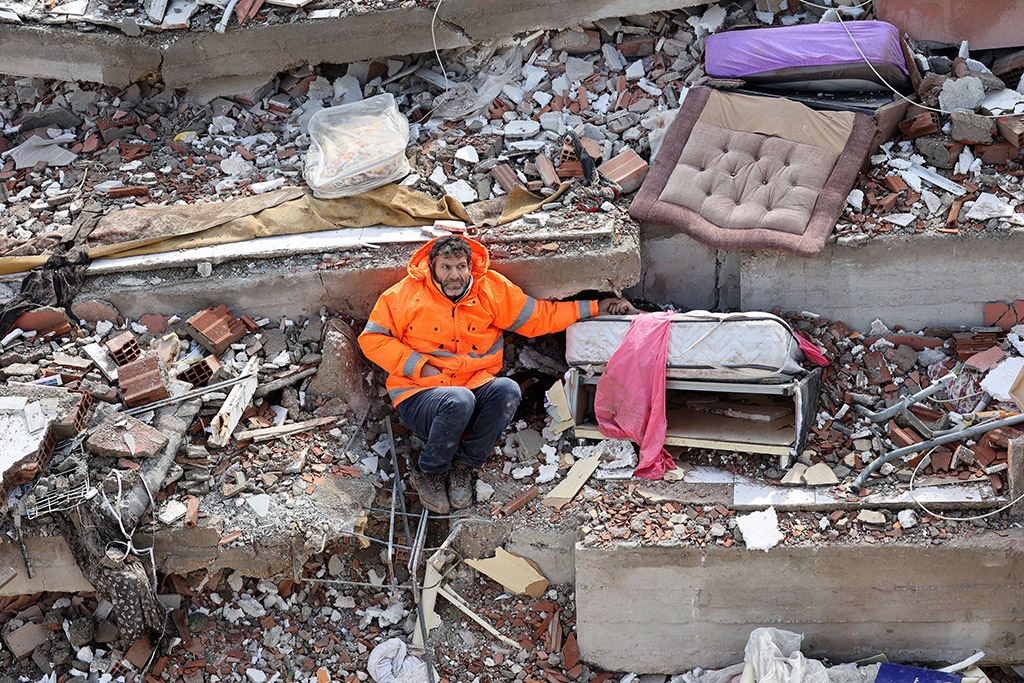
Mesut Hancer holds the hand of his 15-year-old daughter Irmak, who died in an earthquake in Kahramanmaras, Turkey. Rescuers in Turkey and Syria braved frigid weather, aftershocks and collapsing buildings, as they dug for survivors buried by an earthquake that killed more than 5,000 people. © Adem Altan/AFP
The photograph I have chosen is one that I haven’t been able to forget. It was taken in Kahramanmaras, Turkey, on 7 February, the day after a 7.8-magnitude earthquake struck the region. It centres on Mesut Hancer, who sits perched among the rubble of a collapsed building gently holding the hand of his dead daughter, Irmak.
I remember first seeing this painfully poignant image and feeling floored by it. The photographer Adem Altan, working for AFP , who has over 40 years’ experience, said: ‘My eyes were full of tears and I had a hard time not crying as I took the pictures…’ He had captured a deathly quiet and intimate portrait of love. The kind of image that makes you look twice, because you can’t quite believe what you are seeing.
Altan focused on Hancer and his daughter, so that the rubble frames them and isolates them in the destruction, but wider shots show people all around searching for loved ones. The scene plays out in a short depth of field which makes the rubble look almost vertical and Hancer like he is suspended in the air. Time also seems to be standing still. Hancer spent over a day holding his daughter’s hand in freezing conditions.
He saw Altan with his camera and beckoned him over to take closer pictures of her. He wanted the world to see his heartbreak. On the day there was no question about us publishing it. Everyone who saw it had the same reaction. This image of one man’s loss (his mother, brothers and nephews also died in the quake) represented thousands others. In the end we ran the photograph on the front page of The Guardian.
Krishna Sheth, Photography Editor, 1843 magazine, The Economist

Yulia takes a moment to calm her emotions as her family installs a new wooden cross on her husband’s grave, Dnipro, Ukraine, 14 April 2023. © Emre Caylak/Agentur Focus
This is a very strong and emotive image for me. Yulia stands in a moment of quiet grief as her family installs a new wooden cross on her husband’s grave. Her closed eyes and tilted head reveal the weight of her profound sorrow. Her grief acquires a symbolic meaning, thanks to the backdrop of the photo, which underscores the national tragedy that has befallen countless families. The composition of the colourful jackets alongside the Ukrainian flag is striking and well measured in the frame.
Yulia’s blue jacket and the yellow jacket worn by another family member – the same colours as the flag – serve as subtle expressions of personal and familial identity within this sombre atmosphere. In this scene, the installation of the cross becomes a shared ritual of remembrance, linking individual loss with the broader narrative of a country grappling with the consequences of conflict. The image encapsulates the intersection of personal anguish, national identity, and the enduring resilience of those left behind in the aftermath of war.
Jamie Honeywood, Senior Picture Editor, Channel 4

Palestinians inspect a destroyed area after Israeli air strikes in Gaza City, 23 October 2023. © Mohammed Saber/EPA-EFE/Shutterstock
This image stood out when searching through what to use to represent Channel 4 News on 23 October 2023. The layers of destruction are devastating, each square block representing a home. The grey tones of the image and the various objects thrown across the street made me stop and take a moment. I had a deeper look into all the aspects of the photograph. There are pops of random colour of everyday life from clothes hanging from windows.
Then there is the gentleman on top of the rubble just to the right who looks paralysed and completely broken about what has happened – very powerful. When you then look to the left of the image and down the street, you can see how densely populated such a small area is. All the wires overhanging across the street, and then flats built on top of each other. It gives you the realisation the amount of death and damage that can be caused by one strike.
Guy Lane, Picture Editor, News, The Guardian
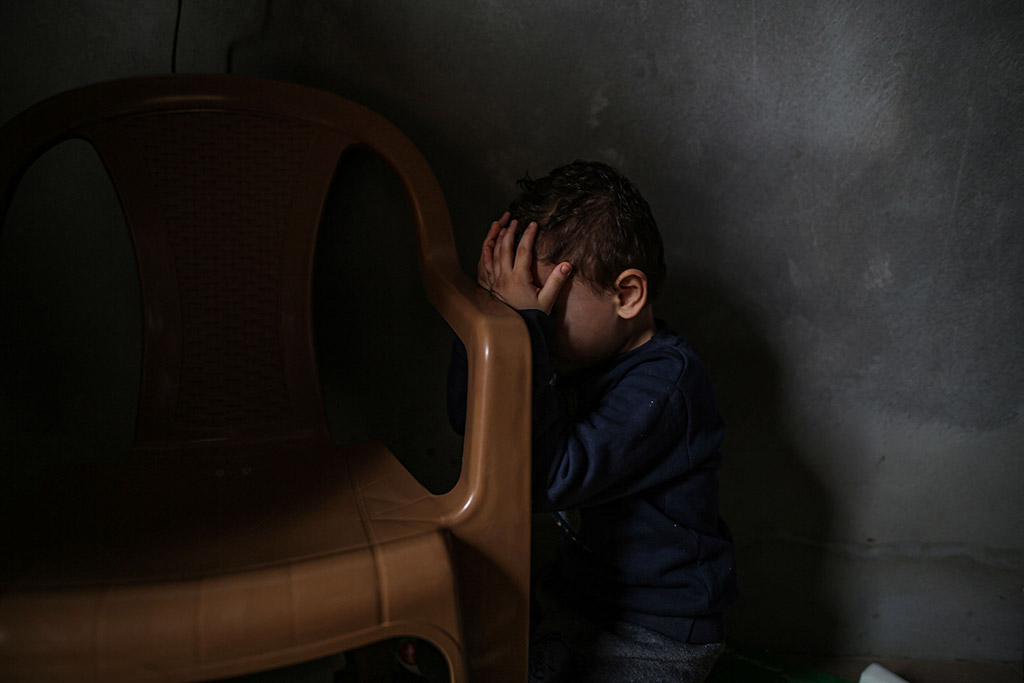
Relatives of the Kadih family members killed in Israeli attacks, mourn during funeral prayers in Khan Yunis, Gaza, 13 November 2023. © Mustafa Hassona/Anadolu/Getty Images
Mustafa Hassona took this photograph on 13 November in Khan Yunis in southern Gaza. It shows a child mourning during funeral prayers for members of the Kadih family. Hassona remained and filed more pictures, some showing women grieving and consoling one another indoors, probably in the same room as the child. There are at least three wrapped bodies on the floor. Later, outside, men watch in silence as they are loaded onto the back of an Aeroklas. Now there seem to be at least four. At some stage the mourners gather in the street for prayers, and we can count six dead.
Finally, the men watch as the shrouded bodies are lowered into a grave on a plot which looks as if it could almost be a neighbourhood back yard. Those doing the lifting have removed their sandals to stand in the grave.
The child appears in only one other photograph, taken at the same time, but from a higher viewpoint. Maybe Hassona took an elevated, hasty picture before this more composed frame. It becomes clear that the boy is crouching, not kneeling, and leaning forward slightly, letting the chair bear some of his weight. That’s why the seat’s plastic arm rucks the skin on the back of his hands. He needs it for support, and perhaps he doesn’t feel it digging in.
Presumably he is indoors with the women because he is too young to join the men outside. Perhaps, if he is lucky enough for long enough, the day will come when he too can follow a body all the way to its grave.
Further reading:
- Best photography exhibitions to see
- Best photography competitions to enter
- Best photography events and festivals
Plus, have a look at our choices for the best photography books of 2023, or have a look at the best photographs of 2022 and best photographs of 2021.
Follow AP on Facebook, Twitter, Instagram, YouTube and TikTok.

